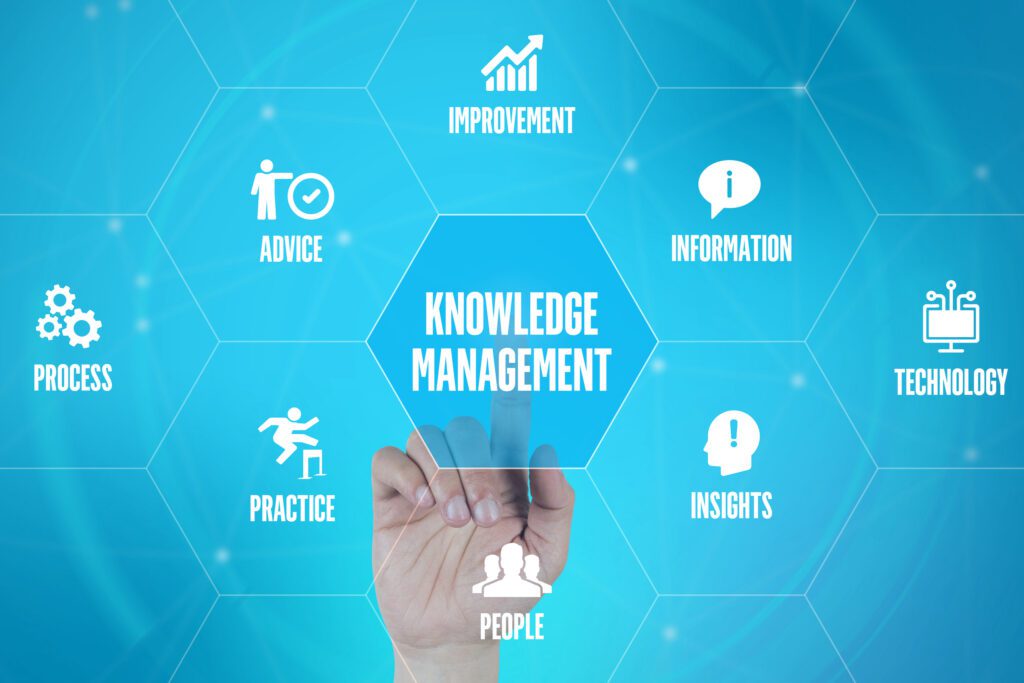
Customer focused companies will understand the value of a knowledge management system [KMS] beyond the more simplified experience they may get with a knowledgebase [KB] provided by a customer relationship management system [CRM]. Enterprise knowledge management is about extending knowledge to the wider organization and invited third parties who may not have access to the CRM and other customer systems.
An enterprise-grade KMS like KnowledgeIQ offers features and capabilities beyond those typically found within a CRM knowledgebase [KB], and enables wide-ranging business benefits. Here’s a closer look at some of the limitations of a CRM KB:
Often a CRM KB limits making content available to internal contact and customer service agents. CRM solutions are not designed to support access to and consumption of this content by other internal and external groups, typically it remains within the remit of the sales and marketing teams. To extend it organisational-wide, additional licensing costs are involved, and extending content can require some customization, all of which can be expensive. A better strategy is to utilise an enterprise KMS as the “single source of truth” for self-service that integrates with customer touchpoints and is able to support content needs across the wider company, connecting more people with the right information.
Many CRM KBs do not have all-encompassing security groups and permissions. Enterprise KMS platforms allow for robust group and permission capabilities; the ability to categorize content, articles and even singular elements within a given article can be restricted to certain user groups. This allows for multiple users (agents, customers, employees, partners, etc.) to access the same article but only view the content they have the permissions to see. This makes article creation and management much simpler and cleaner, helping to remove duplicate content. This capability is enabled by Single Sign-On (SSO) and other authentication technology that allows organizations to serve the right content to the right people.
More often than not a CRM KB lacks a hierarchical information architecture. The content itself is not categorized accordingly, but instead, is stored on the same level when viewed in the CRM. This creates a poor navigational experience and weakens the findability of content for the broader user base within the organisation. The underlying foundations of an enterprise KMS is a protected site structure which provides a framework that makes it easy for users to find and consume relevant content, either through a navigation or searching. A meaningful site structure creates the best navigation experience and allows a business to facilitate the flow of knowledge clearly and efficiently.
Limited authoring and governance
CRM KBs struggle to support governance requirements of larger more complex enterprises. They often lack functionality to double-check and approve content changes, so errors can creep in. KBs don’t always have the ability to notify users of updates and this can be problematic. Several features of enterprise KM solutions inherently overcome these limitations, for example:
CRM KBs are designed for use within the CRM solution itself, integrations that would provide an omnichannel experience [mobile, web apps, chatbots etc….] are challenging. If an organization requires this kind of integration, they usually must pay for additional services, integrations, or third-party applications. Many enterprise KMS platforms are designed to work well with third-party applications using an API. As most large enterprises are multiplatform, this is a clear advantage over the CRM KB.
Of course CRM platforms are significantly more than a knowledgebase e.g. pipeline management, lead management and marketing, so why not integrate it into your KMS. A modern KMS can integrate with CRM platforms and deliver the better features within that environment and support the broader organisational need for knowledge management. The best of both worlds can be achieved with little effort.
With KnowledgeIQ your customer-facing teams can effortlessly access the right information and answers from across your company to drive exceptional customer experiences. Bring all your knowledge right to where your team already works and proactively bring them the knowledge they need. For further information about Knosys’ enterprise knowledge management solution KnowledgeIQ, please book some time with one of our consultants